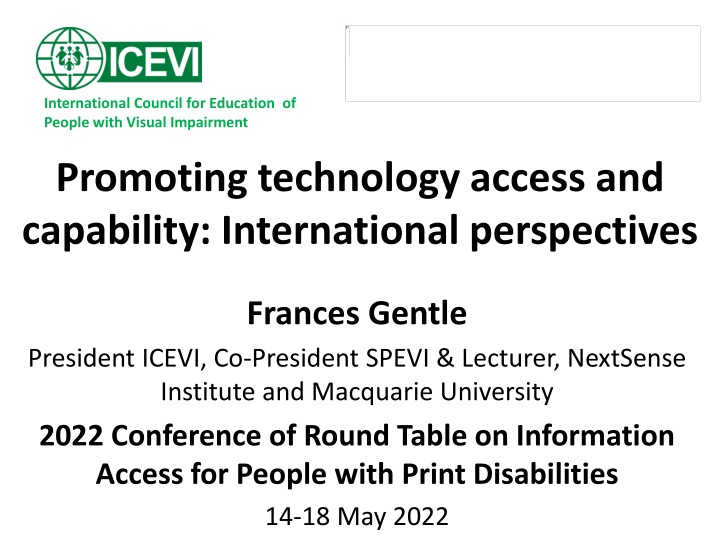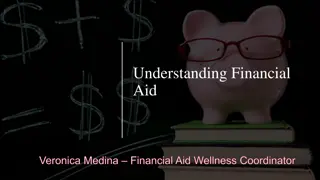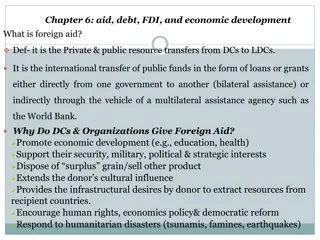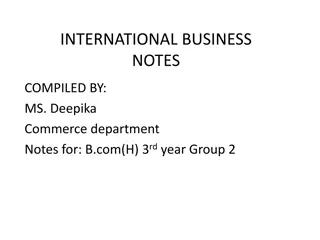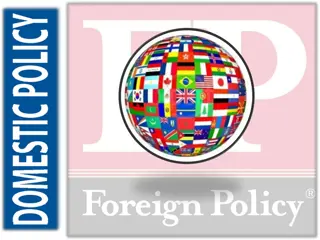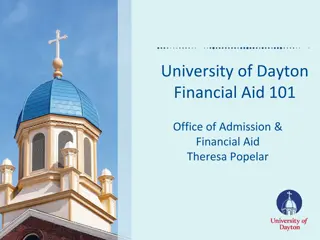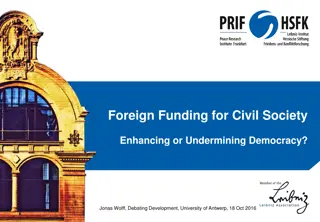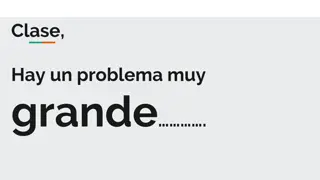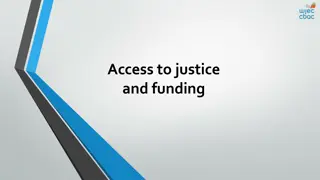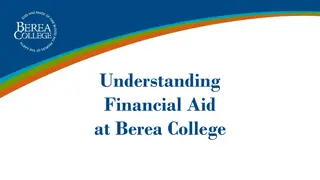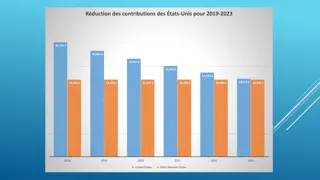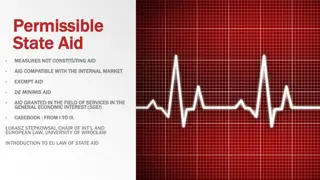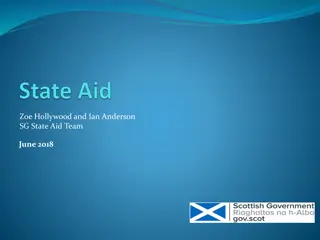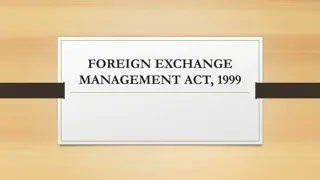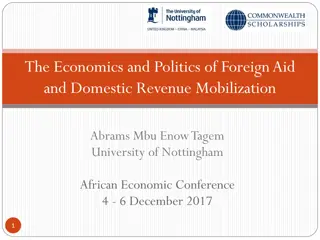Reevaluating and Realigning United States Foreign Aid
Executive Order highlights misalignment in current U.S. foreign aid industry, emphasizing American interests. It mandates reviews and approvals for all foreign assistance programs, with decisions aligned with U.S. foreign policy.
Download Presentation

Please find below an Image/Link to download the presentation.
The content on the website is provided AS IS for your information and personal use only. It may not be sold, licensed, or shared on other websites without obtaining consent from the author.If you encounter any issues during the download, it is possible that the publisher has removed the file from their server.
You are allowed to download the files provided on this website for personal or commercial use, subject to the condition that they are used lawfully. All files are the property of their respective owners.
The content on the website is provided AS IS for your information and personal use only. It may not be sold, licensed, or shared on other websites without obtaining consent from the author.
E N D
Presentation Transcript
Logos of NextSense and Macquarie University. NextSense logo comprises a wavy line with two dots beside the words Next Sense. The Macquarie University logo comprises a shield with an image of a lighthouse and a star beside the words Macquarie University. International Council for Education of People with Visual Impairment Promoting technology access and capability: International perspectives Frances Gentle President ICEVI, Co-President SPEVI & Lecturer, NextSense Institute and Macquarie University 2022 Conference of Round Table on Information Access for People with Print Disabilities 14-18 May 2022
Overview of Presentation Assistive Technology and the UNCRPD Technology access in schools in the Global North and Global South why the technology disparities for school children with VI? GATE, 2 GREATs and 5 Ps ICEVI and DAISY Visionary Learning through Technology initiative
Assistive Technology - Definition The World Health Organisation (2004) definition of Assistive technology: Any device or system that allows individuals to perform tasks they would otherwise be unable to do or increases the ease and safety with which tasks can be performed.
UN Convention on the Rights of Persons with Disabilities - 2006 Assistive technology Article 9 Accessibility Article 21 Freedom of expression and opinion (and access to information) Article 24 Education Article 32 International cooperation
Sustainable Development Goals 17 SDGs launched adopted by the UN in 2015 as a universal call to action, to be achieved by 2030 Information and Communication Technologies (ICT) included in goals and targets: SDG 4 Quality Education (Target 4b) SDG 5 Gender Equality (Target 5c) SDG 9 Industry, Innovation and Infrastructure (Target 9b) SDG 17 Partnerships for the Goals (Target 17.8)
Technology in the Global North North America, Europe, Australia, New Zealand Technology used by school students with vision impairment (VI): Braille, print and audio technology options for students with VI include hard and soft copy large print and braille, technology and devices, software and apps. Regional and education sector variability Technology access out of school hours
Technology in the Global South Countries in Latin America, Asia, Africa, Oceania Examples of technology used by students with VI: Papua New Guinea: Slate and stylus, magnifiers Malawi, Kenya, Tanzania, Rwanda: Slate and stylus, brailler (if lucky), Orbit readers (if schools have donor funding) Nigeria: Students with VI just listen Technology locked away at the end of each school day.
Why are there such disparities in technology access for school students in the global north and global south?
World Report on Disability 2011 More than a billion people (15%) experience disability globally Barriers in accessing health and education services and employment Lack of accessibility - built environment, transport systems and information Little information available in accessible formats Significantly lower rates of ICT access World Health Organization and World Bank, 2011a; 2011b
World Report on Disability (2) 1 billion people in need of AT globally but only 1 in 10 have access to provision. Includes 200 million people with blindness and low vision, and 466 million people with deafness and hard of hearing Due to high costs and a lack of awareness, availability, trained personnel, policy and financing
GATE, 2 GREATs and 5 Ps
GATE July 2014: WHO established the Global Cooperation on Assistive Technology (GATE) initiative
GATE - Global Cooperation on Assistive Technology Vision A world where everyone in need has access to high-quality, affordable assistive products to lead a healthy, productive and dignified life Goal To improve access to high-quality affordable assistive products globally
GATE and the 5 Ps
1 People A user-centred approach is critical to ensure the needs of individuals with disabilities are addressed when developing policies and provision of services.
P2 Policy WHO developing tools to support countries in developing national AT policy and programs.
3 Products WHO launched its Priority Assistive Products list in 2016
4 Provision WHO is developing guidance on innovative models of service provision, including examples of good practice e.g., Global Guide for Assistive Technology launched in 2021
5 Personnel WHO is developing an Assistive Products Training Package on provision of a range of simple assistive products selected from the Assistive Products list.
GREAT Global Research, Innovation and Education in Assistive Technology (GREAT) Summit
GREAT Summit Hosted by WHO in Geneva, August 2017 Established 5 global priority themes: 1. Effects, costs and economic impact 2. Policies, systems, service provision models and best practices 3. Quality and affordability 4. Appropriate human resources 5. Standards and methodologies for the assessment of need and unmet need Determined to meet again in two years and publish a world status report on AT
GreAT Global Report on Access to Assistive Technology (GReAT)
GreAT 71st World Health Assembly Resolution May 2018 Calls upon WHO to prepare a Global Report on Access to Assistive Technology (GReAT) WHO partnership with UNICEF Steering Committee, Expert Advisory Group, and global AT stakeholders Report to be launched at 75th World Health Assembly in May 2022
GReAT Global consultation August 2019 - First consultation, Geneva - 260 invited participants - 60 countries - 2 volumes of proceedings 1110 pages October 2021 - Second consultation, virtual - 291 invited participants - 68 countries
AT disparities between school children with VI in Global North and Global South - GATE s 5Ps
UK Scoping research 2018 Scoping research on assistive technology by the Global Disability Innovation Hub and Partners for UK Department for International Development (Holloway et al.)
1 People Need to measure impact evidence is key tool in promoting investment and prioritising interventions Stigma and discrimination pervades all sectors of the disability community User-centred product design to ensure products meet user needs, are used more and abandoned less
P2 Policy Very few countries have a national AT policy or program; excessive bureaucracy Policies without implementation and review Lack of coordination between parties responsible for AT development and delivery
3 Products Affordability, availability and quality in terms of product and service delivery costs Standards needed - Globally accepted specification and standards for AT is a significant barrier Need for a critical mass of innovation most AT is designed, developed and sold by large private companies
4 Provision Need for sustainable systems approach Fragmented services Donor dependent supply Low demand, high cost
5 Personnel Expanding current AT workforce Harnessing the power of mobile technology Continued development of workforce
Visionary Learning through Technology ICEVI and DAISY Consortium
Vision Working towards a future where students with vision impairment are empowered through technology to learn alongside their sighted classmates, gaining valuable digital skills and succeeding at school, college, university and into the world of employment.
Collaborative partnerships ICEVI and DAISY Consortium global partnership Collaboration with WIPO ABC, Bookshare, ICEVI partners, governments, NGOs, schools, publishers, technology companies, organisations of persons with disabilities
Kit, confidence and content Kit A device I can use to read and write independently Confidence Skills that help me learn Providing publishers, teachers, parents with knowledge and skills to empower children Content Books I can read Increasing the volume of accessible books through training of teachers and publishers in how to create born accessible texts and resources for learners with blindness and low vision
Implementation Launched at 6th Africa Forum, Uganda in 2015 Linked with state ratification of the Marrakesh Treaty Africa: Capacity programs in Kenya, Burkina Faso, Ethiopia, Tanzania, Ghana, Nigeria, Lesotho, Malawi Plans to expand to ICEVI Latin America and West Asia
In Conclusion Inclusive technology holds the potential to improve and transform health, education, livelihood and social participation. These are fundamental human rights everyone is entitled to. And if we are lucky to grow old, the chances are that we will all use assistive technology by then. Adapted from Borg and colleagues (2021), GReAT, but do we care?
References 1 Borg, J., Zhang, W., Smith, E.M., & Holloway, C. (2021, Dec). Introduction to the companion papers to the global report on assistive technology. RESNA. https://www.tandfonline.com/doi/full/10.1080/10400435.2021 .2003658 Holloway, C. et al. (2018). Scoping research report on assistive technology on the road for universal assistive technology coverage. Global Disability Innovation Hub and Partners for UK Department for International Development. https://assets.publishing.service.gov.uk/media/5d1f5a2fed915 d0bbba6bf15/AT_Scoping_Report-Final.pdf
References 2 Smith, B. & McCulloch, P. (n.d.). Inclusive technologies assisting students with learning difficulties and disabilities. Spectronics. https://www.spectronics.com.au/article/inclusive-technologies- assisting-students-with-learning-difficulties-and-disabilities/print United Nations. (2014, Nov). Adaptive, assistive, inclusive technology can aid persons with disabilities in reaching their potential in communities, workplace. https://www.un.org/press/en/2014/sgsm16377.doc.htm World Health Organization. (2017). Global research, innovation and education in assistive technology: GREAT Summit report. https://apps.who.int/iris/handle/10665/259746
References 3 World Health Organization. (2018, Feb). Global cooperation on assistive technology (GATE). https://www.who.int/news- room/feature-stories/detail/global-cooperation-on-assistive- technology-(gate) World Health Organization. (2018, May). Assistive technology: Key facts. https://www.who.int/news-room/fact-sheets/detail/assistive- technology World Health Organisation. (2018, May). Seventy-first World Health Assembly, Agenda Item 12.5. Improving access to assistive technology. https://apps.who.int/gb/ebwha/pdf_files/WHA71/A71_R8- en.pdf?ua=1
References 4 World Health Organization and World Bank. (2011a). World report on disability. https://www.researchgate.net/publication/282877201_World_ Report_on_Disability_WHO World Health Organization and World Bank. (2011b). Summary world report on disability. https://www.refworld.org/pdfid/50854a322.pdf
